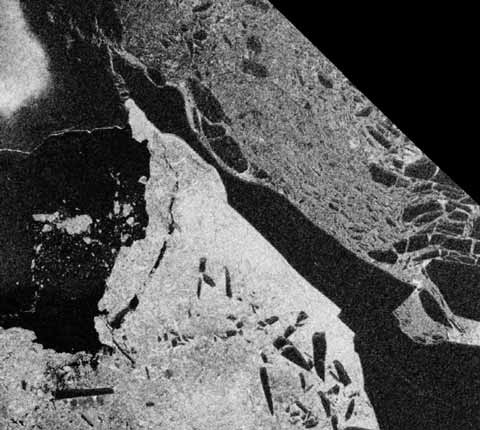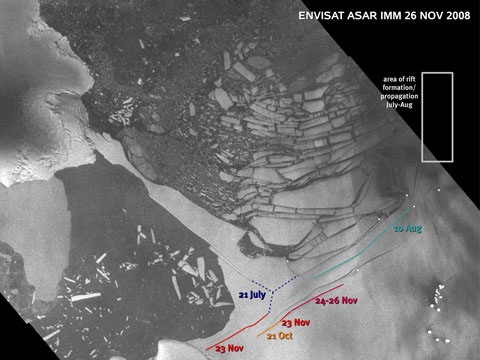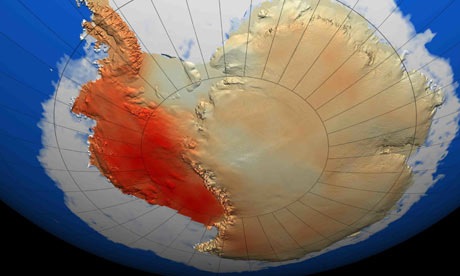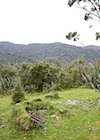
In the recently published Ice, Mud and Blood: Lessons from Climates Past British geologist Chris Turney describes how scientists are building up knowledge of the earth’s climate in the past and what it might mean for our future. He describes attending a showing of The Great Warming Swindle in Australia in 2007. He remarks on the panel discussion which followed when questions were taken from the audience: “…I suddenly realised that many of my companions were either loonies or had been very badly informed. It struck home just how poor a job we’ve done as scientists in communicating our work.”
I’m not sure that the scientists are altogether to blame, but certainly his book makes amends if they are required.
He selects various periods in the past when the climate changed and reports on the current thinking about what caused those changes. Along the way he provides fascinating stories of how the jigsaws have been assembled from a great variety of pieces of scientific investigation.
His first two periods are very distant. One 55 million years ago, the drastic warming over a period of 160,000 years, known as the Peleocene-Eocene Thermal Maximum (PETM), on which Gareth had a recent post. The second from 540 million to 1000 million years ago when it appears that the globe was almost covered in ice during at least three ice ages. Acknowledging that these events happened when the patchwork of continents was different from our time he moves closer to the present in the remainder of the book. He begins a mere 2.5 million years ago when the earth became locked into the bout of ice ages and inter-glacials which continue to the present. His subsequent chapters narrow the focus to episodes within that period: a warm stretch in the last interglacial from 130,000 to 116,000 years ago; the up and down progression from then towards the Last Glacial Maximum 21,000 years ago; the tumultuous time which marked the end of that last ice age from 21,000 to 11,700 years ago; and what it has meant to the conditions of life for humans to be in the comparatively settled, but by no means uniformly even, climate of recent millenia.
The book carries intrinsic interest in its accounts of how the changes in the past are reconstructed. The evidence gained from ice cores and ocean bed cores is always astonishing in its detail and complexity. The range of information that can be prised from the shells of foraminifera, ancient ocean-dwelling organisms, is extraordinary. The sheer excitement of discoveries which confirm other discoveries carries a drama which the author is well capable of communicating. Clearly paleoclimate is an absorbing and rewarding area in which to work.
But Turney is much concerned with its lessons for the present. Understandably, considering the likely causes of past changes. Greenhouse gases are always an important part of his picture. For example the PETM was probably triggered by the release of a vast amount of carbon into the ocean and atmosphere over less than 2000 years, likely to have been methane from ocean sources. This was enough to drive a massive warming over 30,000 years or so. The warm conditions persisted for another 60,000 years.It then took another 70,000 years before temperatures started to drop and return to what they were before, with the oceans playing a different part at this stage in gradually sucking greenhouse gases out of the air. The implications for us today? If we exhaust the available fossil fuels we will release more carbon than was released at the beginning of the PETM.
Another lesson from the past is the importance of positive feedbacks in the climate system, when the changes that have occurred trigger new and greater changes than the original cause on its own would account for. There is a warning for us that a cascade of unintended consequences can follow from apparently small beginnings. “A little more greenhouse gas in the air does not cause a little change in climate.”
A further lesson is the rapidity with which changes have sometimes happened in the past as tipping points were reached. Abrupt shifts in the climate system are quite possible, as is illustrated, for example, in his account of the sudden reversals which marked the progress towards the Last Glacial Maximum.
Summaries like this unfortunately obscure the pleasure and interest of the book which lies in the wealth of detail it contains and the cheerful clarity with which it is ordered and conveyed to the reader. The underlying earnestness of the author’s concern about the direction we are headed is unmistakable but there is nothing ponderous about his narrative.
Incidentally the author has spent time in New Zealand and describes being able to correct a faulty carbon-dating of wood in the Franz Josef glacier’s Waiho Loop moraine to show that the glacier surge was 13,100 years old and thus contributory evidence of a southern hemisphere cooling at a time when the northern hemisphere was warming. This phenomenon he discusses in the context of his account of the abrupt veerings which marked the end of the last ice age. His connection with New Zealand includes a directorship in the new young company Carbonscape which is using a world-first microwaving technology to make charcoal. I expect to post about that soon.
Like this:
Like Loading...


 According to Alister Doyle, Reuters’ man in Antarctica (now that’s a job I’d like to try…), what’s left of the Wilkins Ice Shelf is on “the brink of collapse with just a sliver of ice holding it in place“. Earlier this week, Doyle
According to Alister Doyle, Reuters’ man in Antarctica (now that’s a job I’d like to try…), what’s left of the Wilkins Ice Shelf is on “the brink of collapse with just a sliver of ice holding it in place“. Earlier this week, Doyle 
